I was recently contacted by a fellow looking for information on the Japanese Type 1 heavy machine gun – a replacement for the Type 92 whose name would suggest it was adopted in 1941, but which never seems to have been put into mass production. This fellow was able to track down the only known surviving example at the US Army Ordnance Training and Heritage Center, where the staff was very helpfully willing to pull it out of storage and take some photos.

The main source of we know about this gun is an article in the June 1945 edition of the US Army Intelligence Bulletin, which is very helpfully reproduced on LoneSentry.com. Here is the text, along with a scan of the one photo in the article:
THE NEW JUKI
Weight Reduced by 52 Pounds
Soldiers who are familiar with the Juki—the rather cumbersome Model 92 (1932) standard heavy machine gun—will be interested to learn that the Japanese have produced a new, handier model of their heavy machine gun. The new weapon is designated the Model 01 (1941).
The outstanding features of the Model 01 are its removable barrel and the reduction made in weight over the Juki, for the Model 01 weighs nearly 50 percent less than the Model 92. The reduction in weight has been accomplished by a lightening of the weight of most component parts. In turn, reductions in the moving parts has produced a somewhat higher rate of fire than the Model 92’s, but since the Model 01’s barrel is shorter, it is believed that the newer gun has less range than the Model 92, which is practically a copy of the Model 3 (1914) Hotchkiss-type heavy machine gun.
The new Model 01 (1941) Japanese heavy machine gun. The new gun is gas-operated and air-cooled, but dispenses with the very heavy barrel jacket which permits the Model 92 to maintain a steady rate of fire without excessive heating. The introduction of the removable barrel is supposed to compensate for the loss of barrel jacket. However, it is estimated that trained crews should require approximately 1 minute to effect the barrel change, for the barrel lock is definitely not of the quick-release type.
Though the Juki takes both rimmed and rimless caliber 7.7-mm ammunition, the new Model 01 (for reasons best known to the Japanese) takes only rimless ammunition. This ammunition is fed from the left side in the usual 30-round metal strips. Fire is controlled by a thumbpiece-trigger, but the thumbpiece does not also serve as the safety. The safety device consists of a lever on the left side of the receiver.
The Model 01’s tripod, though similar to that of its predecessor, is generally improved. It shows that consideration has been given to carefully calibrated indirect fire along fixed lines, if not for accurate searching fire. A telescopic sight may be fitted.
These figures compare the Model 01 and the Model 92:
Model 01 Model 92
(Juki)Weight of tripod 36.3 pounds 61 pounds Weight of gun 33.6 pounds 61 pounds Total weight 69.9 pounds 122 pounds Length without flash hider 38 inches 45 inches Length of barrel 23.9 inches 29.5 inches Total traverse 45 degrees 33.5 degrees Only one sample of a Model 01 has so far been encountered. This one was found on Luzon. Though it was numbered “Serial 1”, the weapon was a production job, and not just an experimental item hand-made by some arsenal. It is not known whether the Japanese have produced the Model 01 in any quantity, or whether they consider it superior enough to the Juki to warrant replacement of the latter in spite of deterioration of production facilities and of increasing need for artillery, antitank, antiaircraft, and armored vehicles.
This article does not clearly mention that the Type 1 retains the same basic mechanical design as the Type 92, including its use of cartridge trays for feeding (presumably the exact same trays used by the Type92, for logistical simplicity). The Type 1 also was intended to be fitted with a 4x periscope-style optical sight.
Interestingly, the 1945 article mentions that the captured gun is serial number 1 – as is the gun we Ordnance center has. These are almost certainly the exact same gun. What we’re all wondering is, are there any others out there that survived the war? Nobody seems to know what the total production quantity was for this model, and any additional information would be much appreciated!
Here are the other photos provided of the known example:
I did find one other reference to the Type 1, in Ordnance Technical Intelligence Report Number 19 (a document printed by the Office of the Chief Ordnance Officer in Tokyo in January of 1946). This document has a bit more information, claiming that the need for a lighter replacement for the Type 92 was recognized as early as 1937. Initial trials of the new gun were first held in March of 1940, along with a new style of mount patterned after the German MG08 sled mount. These trials were unsatisfactory, with the mount being deemed not stable enough and the gun not operating reliably. A second set of trial was held in June of 1940 which were better, but still not ideal. These trials used a modified sled-type mount, and an improved version of the gun (including the use of spade grips in place of the original shoulder stock and pistol grip).
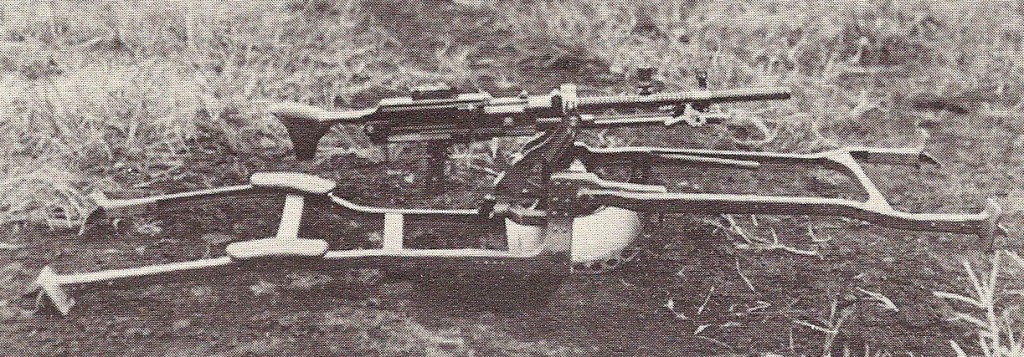
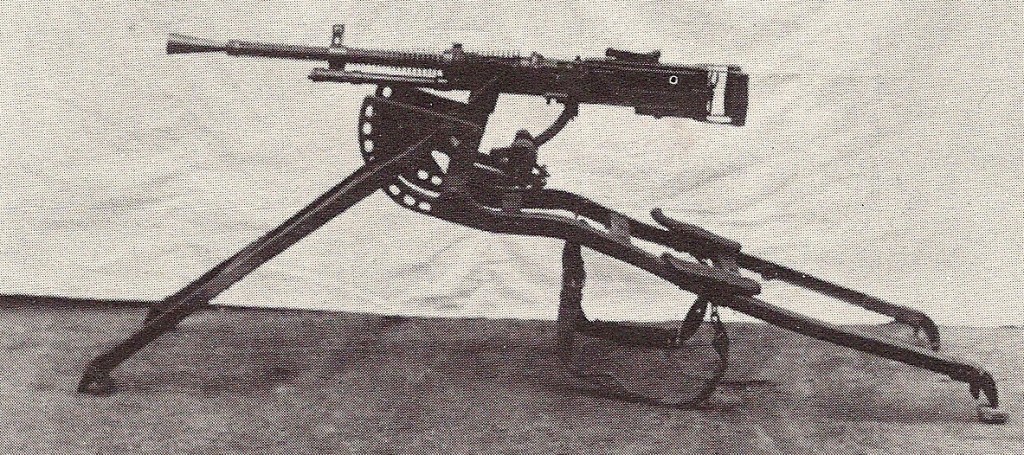
Apparently the Infantry School disliked the sled mount, and development along those lines was halted (until 1942, when a request from paratroop command restarted it, although with no known final product). The final trial model of the gun was fitted to a lightened version of the Type 92 mount, and this version was found acceptable and formally adopted in November of 1942. It was slated to go into mass production and replace all Type 92 guns in service, but a lack of material meant that the plan was never actually put into motion.


![[WWII Japanese Model 01 (1941) Heavy Machine Gun]](https://www.lonesentry.com/articles/japanese-heavy-machine-gun/japanese-heavy-machine-gun.jpg)


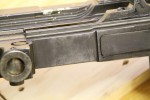
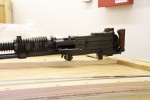
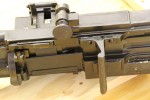
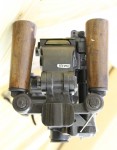
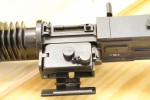
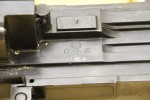
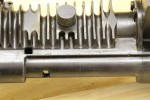
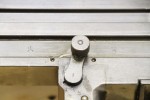
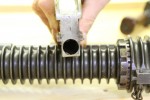
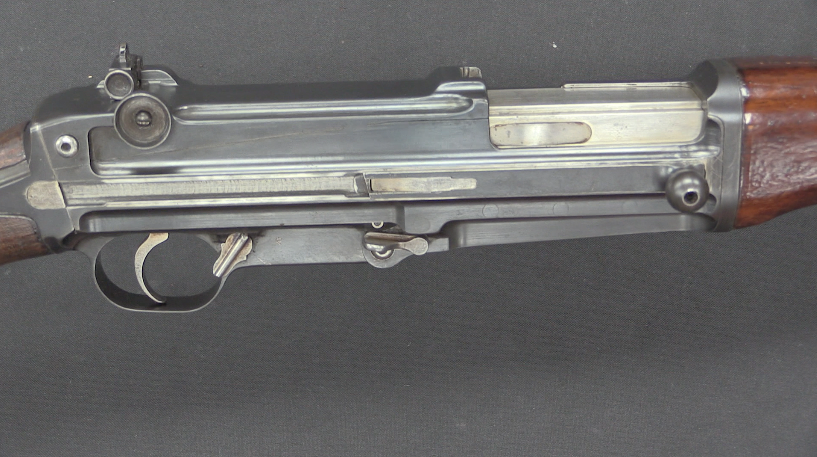
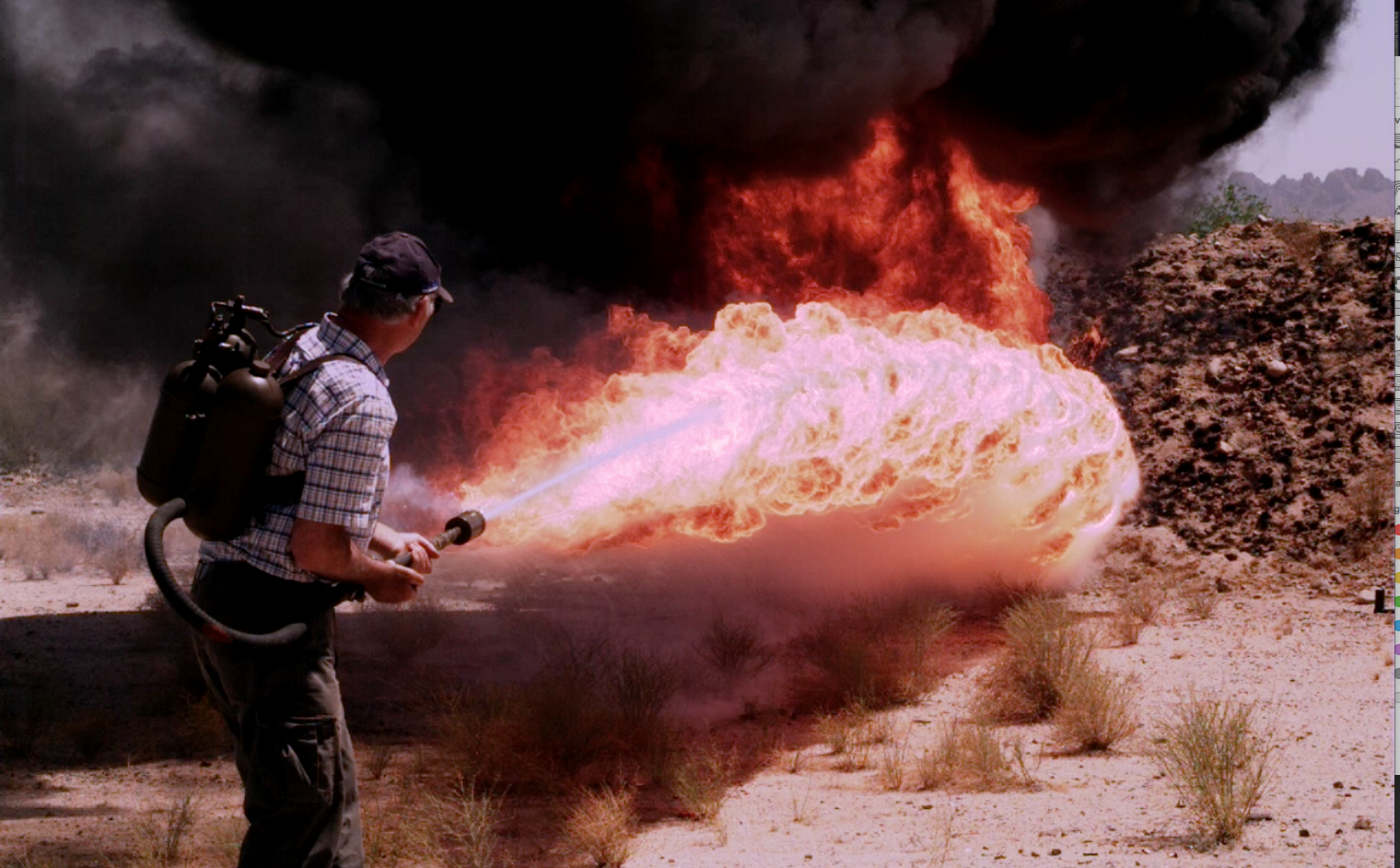

I always wondered what happened to the bulk of the Type 92 guns. Probably the most over-engineered machine gun of WW2, a deactivated copy would look great next to my deactivated M1919.
Were most of these just tossed into the Pacific as part of the demilitarization program, or smelted down, or given away to other Asian militaries? Or by chance, sitting by the hundreds in some Burmese warehouse, complete with all accessories, just waiting for some vintage arms outfit to purchase the lot for US collectors like myself?
You know, there were some instances of live Type 92 machine guns being encountered in the 1980’s…
The most likely culprit being the PRC;
BTW, Weeks goes on to state that the Type 92 won’t take both the old semi-rimmed and the new rimless 7.7mm round, but the new Type 1 will take both types, which contradicts the above statement. I can only assume that either the British version of the intel report got that bit backwards, or Weeks’ editor didn’t understand what he was saying. (The latter being more likely.)
Frankly, the way Weeks describes it would have made more sense, logistically speaking. Although just having one pattern of 7.7mm round would have avoided the whole tangled mess to begin with.
cheers
eon
“Although just having one pattern of 7.7mm round would have avoided the whole tangled mess to begin with.”
But that would have been so VERY un-Japanese. Let’s see:
* 6.5x50mmSR
* 7.7x58mm (rimless)
* 7.7x58mmSR
* 7.7x56mmR (.303 British)
* 7.92x58mm (7.92 Mauser)
Standardization of rifle caliber ammunition in the Japanese military was, as the Brits say, a “nonsense”.
Correction – 7.92x57mm Mauser
It still look like a japanese cousin of the Hotchkiss machine gun, wich originated in the 1900s…the japanese really put their industry, money and brains mainly in the navy side of their military…
According to Chinn (The Machine Gun), practically all Japanese MGs of the era were variants of the Hotchkiss design, due to the Japanese government buying a license for same from Hotchkiss right after WW1.
Even the Nambu light MGs Type 96 (1936) and Type 99 (1939), which are often designated as ZB26 copies, were actually simply lightened Hotchkiss patterns with a ZB26/Bren/Madsen type top-mounted box magazine. The only major difference between them and the earlier Type 11 (1922) and Type 91 (1931) patterns was that feed system, replacing the “hopper” feed of the two earlier guns, which used the five-round chargers for the Arisaka bolt-action rifle. The type 99, BTW, was the only 7.7mm weapon in the family; the earlier ones were all 6.5mm.
As for the Navy, they didn’t expend a lot of money on MG R&D there, either. The standard Navy flexible MG was their Type 92, not the same as the Army Type 92, but a straight copy of the British version of the Lewis LMG, right down to the 97-round “pan” magazine on top and the 7.7mm round, which unlike the Army 7.7mm rounds (semi-rimmed and rimless) was a rimmed round very little different from the British 0.303in Enfield round. (The life of a Japanese supply officer must have been interesting, to say the least. One wonders how many still had all their hair firmly rooted by about 1943.)
The biggest members of the Japanese MG family were the 13.2mm Type 93 (1933) ground gun, and the 12.7mm Type 1 (1941) aircraft gun. The Type 93 was another Hotchkiss copy, in fact (according to Chinn) a copy of an experimental aircraft MG Hotchkiss was developing in secret for the French Air Force. However, the license agreement the Japanese government agreed to prohibited them from using it as an aircraft gun, apparently to keep the French Air Force happy.
The Type 93 was instead used mainly as a ground-based AA weapon on a single tripod or in multiple mounts. It had a top-mounted box magazine holding 30 rounds, and like the German 20mm AA used on the “Flakvierling” mount with similar 20-round magazines, had a little trouble with sustained fire. (The secret French version, rather more sensibly, was belt-fed.)
The other Japanese HMG had none of these problems. The Type 1 (1941) was nothing more nor less than a rivet-for-rivet copy of the American Browning M2 .50 aircraft MG, right down to its cartridge. It was used exclusively as an aircraft gun, usually in wing or (synchronized) engine-cowling mounts on fighters.
They did do us one better, though, in that they went on to equip a lot of their fighters with a 20mm cannon that was basically a scaled-up “Ma Deuce”, firing the same 20mm Oerlikon rounds everybody used on both sides. This was at the same time that we were using the AN-M2/M3 cannon in 20mm, Oerlikon-system guns that never worked all that reliably, and required lubricated cartridges to work at all.
In fact, we were still using them (in the Navy’s MK12 version) as late as the Vietnam War, in the F-8 Crusader, A-4 Skyhawk, and A-7A Corsair II. (Pilots of the above learned early on that high-G maneuvers tended to make the MK12 cannon “go on strike”, until you could get back to the boat and have an ordnance man “reason” with them. Usually with a Stillson wrench.)
Our Ordnance Board maintained that it was “impossible” to scale the Browning gun up to use 20mm rounds. The Japanese Army and Navy ordnance boards apparently weren’t aware of this, and as a result their fighter pilots had very reliable 20mm cannon to shoot at our aircraft with.
Imagine if our airmen had been gifted with the same sort of weaponry.
And yes, Col. Chinn, himself a USMC ordnance expert during the war, was very definitely “honked off” about the whole wretched affair.
cheers
eon
Or you could have just copied the British Hispano Mk.II or Mk.V verbatim, which did not have any major reliability problems despite being based on the same basic Hispano-Suiza design as the AN-M2/M3… There was also an attempt to copy the German MG 151 as the .60 caliber aircraft gun, but that project was never satisfactorily concluded, either. In any case, for some reason the USN did not want the M39 revolver cannon, which was a clear improvement over the MK12 (and many would argue, actually as good in practice as the later M61A1 Vulcan, but of course it suffered from NIH syndrome).
The big fail was to use “we will mass-produce it and LATER we will see do it work properly” principle and that there was no backup design for case if the basic design will fail.
According to Chinn, the fellow responsible for all this was Oerlikon-Buhrle’s demon salesman, Antoine Gazda, who somehow managed to flog the Oerlikon (actually Becker-Semag) design to everybody in Europe plus the U.S. while convincing each customer that they, and only they, had the “secret” of this world-beating gun.
The Hispano and British Hispano 20mm aircraft guns were virtually indistinguishable from the German 20mm aircraft guns, and either lot was virtually identical to the Royal Navy deck-mounted flexible gun that the U.S. Navy also adopted. At one point the RN was “appropriating” barrels from the RAF’s Hispano supply chain to get the deck-mounted Oerlikons out to the forces soonest, carefully neglecting to tell Lord Beaverbrook that they were doing so! (The Secret War, Gerald Pawle.)
The problem with the AN-M2/M3 version apparently was that Navy BuOrd decided to change tolerances and materials to make the gun easier to mass-produce, thereby restoring the glitches that had been eliminated from the prototypes in Switzerland before Gazda started his “medicine show” tour in the early thirties.
A similar fate befell the Eugene Stoner-designed AR-15 when, as the M-16, it fell into the clutches of Army Ordnance in the early 1960s. They didn’t like Stoner’s M-3 “grease gun” level loose tolerances, not realizing that Stoner made them that way deliberately to ensure that the rifle would fire and cycle no matter what. They tightened up all the tolerances. Oops.
Also like the AR-15 case, BuOrd specified a different DuPont propellant powder for the AN-M2/M3, that had been rejected by the designers of the original gun because of a combination of increased cyclic rate and increased fouling, which made a mess of the mechanism. As happened with the ball powder problem with the M-16. Oops again.
The moral is, “If it ain’t broke, don’t fix it”.
cheers
eon
The Hispano-Suiza HS.404 was not identical to the Becker-Semag Advanced Primer Ignition (API) blowback cannons, which the Oerlikon naval guns (and ground based AA guns used by the British army) were based upon like you wrote. Its constructions had some similarities, but it was gas-operated, not API blowback. The German 20mm MG FF was also based on the Becker/Oerlikon, but the later Mauser MG 151 and its 20mm version MG 151/20 were short recoil operated and therefore not very similar to either the Oerlikon API blowback cannons or the Hispanos.
As usual “eon” you are presenting extensive knowledge of the subject and I appreciate it.
As I recall reading in past, the Browning itirration in form of Ho-x were successful weapons, namely the Ho-5 in 20mm caliber. Very interesting indeed; learn and improve want you can – way to do it.
There was one of these (or very similar) in the museum at Castlemaine in Victoria.Hopefully it survived the meltdown of semi and automatic weapons here in the 90’s.
I’ll have a look for it next time I’m there.
My dad was invalided out of the canadian navy in 45 as an oerlikan gun platform? busted up his leg. He did say that when the war was over they had great fun shooting seagulls with it as they exploded nicly
He took one of the shells apart and used the hollow body for keeping matches dry while deer hunting up into the 60’s
The Type 92 will fire both rimless and semi-rimmed 7.7mm cartridges. At least the one I saw firing in Arizona would! If the Type 1 only fired rimless 7.7mm, it may have been an attempt by the army to finally standardize their ammo.
As a side note on the 20mm cannons, according to one author I talked with, the Americans considered re-starting production of the Japanese 20mm cannon for the F-86 Sabre during the Korean War. Unfortunately, the factory was too far gone to start up production again.
This what you say in addition to what “eon” mentioned before is quite new to me. I had no idea that American 20mm air-cannons were derived from Japanese design.
Just wondering, if there is M-61 Vulcan (I know it is more complex and heavier with its feed) why to consider single barrel recoil-operated weapon. Conversely, there mush be an intrinsic value to this. Thanks for the note.
Because they weren’t and eon didn’t say that, either. The US 20mm 20mm AN-M2/M3 were derived from the French Hispano-Suiza HS.404 (not directly from Oerlikon design like eon said, however). The USAAF/USAF never used them that much, basically only the P-38 and an export variant of the P-39 (P-400 if I recall correctly) were armed with one. The USN was a different matter, though. They first entered in service with the F4U Corsair (forget the subtype right now) and later remained the main USN fighter cannon armament until the F-8. The F-4 of course did not have them, since it was originally delivered without fixed gun armament and later models had the M61A1 Vulcan.
The 20mm cannon which armed the later F-86 Sabres and other mid-1950s USAF fighters was the M39 revolver cannon, which derived from the German MG 213 (developed during WW2 by the Germans but never used in a production aircraft). The M61 Vulcan first appeared in the F-104 “Starfighter”, although the initial model was unreliable. The improved M61A1 used linkless ammunition feed, which improved reliability markedly.
One can only remotely think under what pressure Japanese procurement system was. For one thing, the material supply in heavily strained economy was probably problematic, this being coupled by air raids and cutting supply sources week by week, day by day. No wonder they actually did not have interest in adopting superior in terms of material use design.
At the same time, the fact that one and the same gun can be made workable with half of the weight is clear testimony of its ingenuity. Hotchkiss was a smart design indeed.
The fellow who posted the pics to this site of the Type 1 had contacted me about it looking for information and I told him that the only example of the gun is in the Aberdeen Provong Ground Museum where I have seen it many times. He contacted the museum and was rewarded with the pictures.
Over many, many years I have never heard of another example and believe that few if any more exist, wherever they may be. I have heard that 10,000 of these guns had been produced but this has never been verified by any records of production of the Hitachi weapons factory which made the Type 1, or any other sources. So, in my opinion, the Aberdeen example is the only one. Quite an unusual situation!
The T3/92 series of HMGs are exceptionally strong, reliable guns and very fun to shoot. Fortunately for owner/shooters, there is currently a large supply of 7.7 semi rimed ammo on stripperrs in the US which functions almost exactly as did the ammo in WWII. The brass is brittle and every once in a while, sometimes more often than not, there is a rupture in the base of the case, releasing a cloud of combustion gas from the ejection port. This can be seen in WWII movies of squads firing this gun in combat and training.
While the basic inspiration for the action of these guns is Hotchkiss, the actions are completely different. The Japanese versions have a very unique bolt lock system that actually included a lock out of the firing pin unless the bolt and lock are completely in battery and locked. The French guns do not have this.
Another unique aspect of the Japanese MGs is the pyramid crosssection to the rifling. As the rifling wears, the rifling actually becomes wider as the pyramid reduces height from the top. A unique way to preserve the rifling over heavy use.
The T3/92 HMGs have many very unique features overall, are extremely accurate on a solid mount such as which is supplied with the guns, and very, very reliable.
In my experience the “woodpecker” nickname of the gun did not have anything to do with a slow rate of fire. The Japanese 7.7 ammo is fiercely corrosive. Extended firing allows combustion gases to enter the firing pin hole. When the gun remains uncleaned in a damp climate over time, the action can lock up solidly due to the fast and aggressive fouling of the corrosive primers. The reason for this is that firing pin can become locked in its hole which freezes the whole action in either the battery position or the cocked position. A T92 that has been left uncleaned, but with sufficient free movement for it to open and fire will start out slowly due to the fouling and then pick up speed as the fouling disperses or is overcome. I have had this experience quite a few times at shoots in the humid climate of summer Vermont. The rate of fire can actually be quite high In some guns when clean and lubricated. Also contributing to the increasing RPM is chambers dirtied by combustion corrosion, which will slow the gun initially if the oiler is not used or the rounds not lightly lubed. Again, the gun will pick up speed in RPM as the lubed rounds create less friction in the extraction process.
It is really astounding to me that the Jpanese troops in the Pacific could be disciplined enough to keep their guns clean and free of corrosion when using such incredibly corrosive ammo!! I guess they really had no choice……FWIW
Bob Naess
Black River Militaria CII